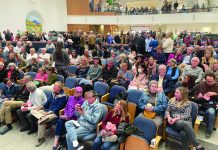As fires rage in other parts of the state, Laguna Beach Fire Chief Jeff LaTendresse Tuesday stressed the strategic importance of thinning dense brush in an interior canyon, flanked by Arch Beach Heights homes.
The fuel modification plan, approved by the city’s Design Review Board in May, has yet to get underway. Laguna Beach resident Marc Wright appealed the decision to the California Coastal Commission in early July.
A hearing on the matter is set for Aug. 13 in Chula Vista. The City Council Tuesday authorized city officials to defend the DRB’s decision.
Community Development Director Greg Pfost said coastal staff recommended finding “no substantial issue” with the appeal. If the commissioners agree, the project will move forward. If not, the commission will review the entire project anew at a future hearing.
LaTendresse believes they have a good case. With Laguna rated as a high fire hazard risk, state law requires maintaining fuel modification zones or defensible space for firefighters, he said. And while the city has 14 existing defensible zones, most establish a fuel break along the city’s perimeter, leaving the interior canyons largely vulnerable.
Such zones serve to lessen the fuel load, which takes the heat out of the fire and allows firefighters to go in and be more effective at defending homes. And it also reduces fuel beside streets, leaving a clearer path if residents need to evacuate, he said.
This is a real concern in densely built Arch Beach Heights, since its only three exit routes “are adjacent to the interface area that we are trying to protect,” said LaTendresse.
Additionally, the targeted area in Nyes and Oro Canyon is full of very old vegetation. If, for example, an ember from a fire in nearby Aliso or Woods Canyon ignited the dry brush in Nyes/Oro Canyon, the flames could easily reach 55 feet, La Tendresse said. That’s why it makes sense to clear the vegetation up to 100 feet from the landscaped and irrigated backyards of homes, he said.
If and when the Coastal Commission gives them the green light, the city will declare the area to be a public nuisance and a fire hazard, and they have a team lined up and ready to get to work, said LaTendresse.
The overall project will involve removing 50 percent of the vegetation from 22 acres in the Nyes/Oro Canyon area. They’ll start by getting rid of the dead and dying plants and then remove any flammable invasives, such as pampas grass. Next to come out would be ornamental plants that aren’t fire retardant, including pines, Cyprus, cedars and acacia. As a bonus, brush thinning will include removing the “amazing amount” of accumulated trash and debris, said LaTendresse.
Because the targeted canyon does contain “high value habitat,” fire department officials were required to provide off-site mitigation to make up for its loss in order to obtain permits. They found similarly high value habitat within a 42-acre city-owned parcel off of Park Avenue. Going forward, 22 of those acres will now have a deed restriction that protects the habitat and open space from any development.
LaTendresse will be ready to make his case at the hearing next week, where he’ll be joined by the city manager and the assistant director of community development, as well as their consultant, biologist and geologist. Mayor Pro Tem Steve Dicterow said he would also make the trek to Chula Vista to represent the Council.




